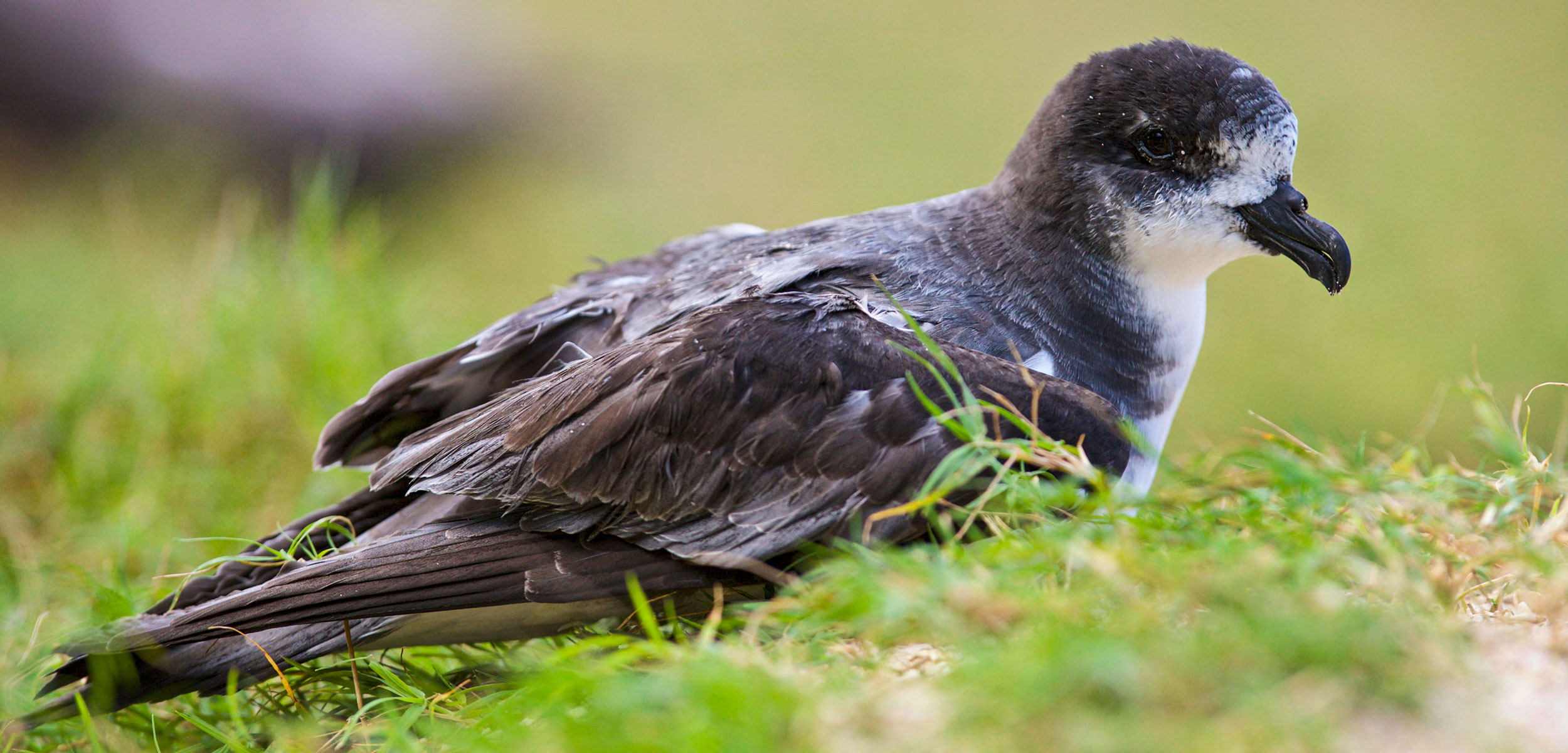Decolonizing Seabirds
A cultural working group is developing Hawaiian names for seabirds in Papahānaumokuākea Marine National Monument, after an extensive period of colonization eradicated many of those names.
Article body copy
Hōkū Cody began journeying to the islands of Papahānaumokuākea Marine National Monument in 2013. At the time, she didn’t know how intertwined her life would become with the remote islands and atolls, or that she would one day help name the very plants and animals that, as a conservation biologist, she had come to research and protect.
Cody is part of a cultural working group that advocates on behalf of Native Hawaiians in Papahānaumokuākea, which encompasses the remote Northwestern Hawaiian Islands. After over a century of militarization and destructive colonial projects in the region, beginning with James Cook’s arrival on the main islands in 1778, a crucial avenue of that reclamation is researching and creating Hawaiian names that were lost during this period of Western encroachment.
“For us in Hawai‘i, a name is everything,” says Cody. “A name says that you’ve acknowledged that existence and that life.”
This past December, that acknowledgment was extended to four species of seabirds—the last of the 21 seabirds in Papahānaumokuākea to receive a Hawaiian name. “They are Hawaiian birds, they should have a Hawaiian name,” says Cody. “It’s an understatement to say that it’s been a long time coming.”
The names were developed through the cultural working group’s nomenclature subcommittee, which since 2012 has brought together an array of experts, including cultural practitioners, scholars, resource managers, and scientists.
Pualani Kanaka‘ole Kanahele, an esteemed kūpuna, or elder, helped guide the group. “When we got stuck,” says Cody, “she flipped us on our head and asked us a different question in a different way, and helped us move along in the thought process.” Kanahele, otherwise known as Aunty Pua, is a key figure for Papahānaumokuākea; in 2007, she developed the monument’s name.
When renaming the Bonin petrel, Cody drew on her own experiences in the field, where she witnessed the sky blacken with the swarming birds as they returned to the islands to breed. Her account of their epic congregations led the group to the word nunulu, a Hawaiian word meaning growling, warbling, or reverberating.
Another committee member, Noah Gomes, called on his expertise researching historical Hawaiian texts and taxonomic systems; in 2017, he uncovered the name of an endemic songbird, ‘alawī, which had been lost for over a century. In similar fashion, Gomes, a research consultant for the Kamehameha Schools of Hawai‘i, located the traditional name for the Tristram’s storm petrel—ʻakihikeʻehiʻale—in a Hawaiian scholarly text published in 1860.
“For us, that was a really big highlight [of] the workshop. We were birthing new names and finding old ones using the same process of really speaking from what we know,” says Cody.
Unlike its English counterpart, named after a British ornithologist, ʻakihikeʻehiʻale translates to “the bird that steps on water” and alludes to how the bird patters its feet on the ocean’s surface as it feeds. Gomes says Hawaiian names often convey information about a species, while Hawaiian taxonomic systems can impart how birds have been traditionally perceived. “I hope that one day we get to a point where we can be as close to these natural resources as we were in the past. I think that it can benefit us and ground us in a really positive way,” says Gomes.
For the Christmas shearwater, the group chose the onomatopoeic ʻaoʻū to evoke the bird’s nocturnal flight call. Notably, the blue-gray noddy was given two names: hinaokū and manuohina. In Hawaiian, a species can have multiple names to correspond, for instance, with stages of growth or behavioral differences, says Cody. For the blue-gray noddy, the group settled on two names to collectively encompass the bird’s full suite of characteristics, from its gray color (hina) to the fact that it forages close to shore.
While the era of exploitation in the archipelago has passed, sea-level rise remains a critical threat to the islands’ seabirds. Most of the land in Papahānaumokuākea rises less than two meters above water, and two of the newly named species, the nunulu and ʻakihikeʻehiʻale, are especially vulnerable. In 2018, conservationists began translocating those two birds to higher ground on Oʻahu where they once flourished, to protect them from coastal flooding.
That the birds are threatened by climate change wasn’t lost on the nomenclature subcommittee. Cody says the name nunulu manifests the bird’s potential to prosper. “When you speak of that bird now, you’re going to speak of the multitudes and you’re going to give it that power,” says Cody.
The seabirds join a bevy of corals, seaweeds, and other species that Cody and other members of the group have named. New species are described annually in the deep, rich waters of Papahānaumokuākea, offering a wellspring of future naming work.
“It is because of endangerment of our language that we have taken action to bring our language back to life,” says Larry Kimura, a Hawaiian language and Hawaiian studies expert at the University of Hawai‘i at Hilo. He says it’s very encouraging to see the cultural working group’s effort to rename plants and animals in the archipelago. “It’s important that we have Hawaiian names that we can bring back to life, to the mouths of the new speakers of the language.”

